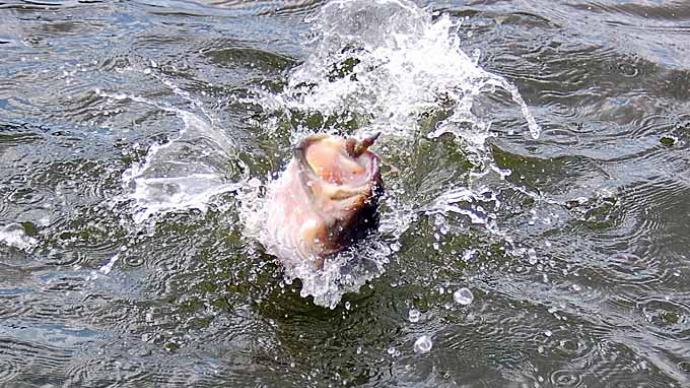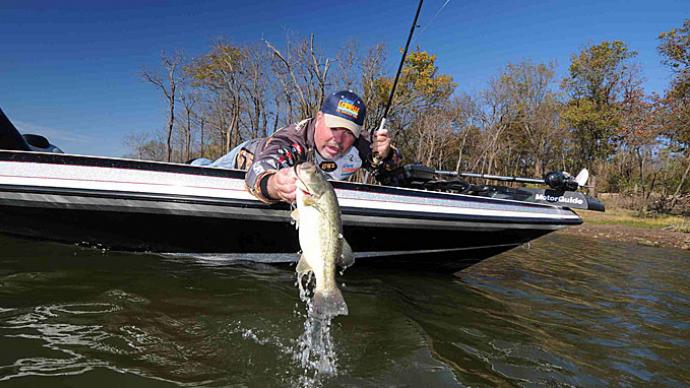
Many of today's anglers all too often seem to have the enthusiasm to get themselves all psyched up for a big day of fishing only to find themselves coming in at the end of the day with only one or two bass. They will spend the day casting, re-rigging, running, and losing lures, all the while getting frustrated because the fish aren't cooperating. Sound familiar? I surely know this feeling, and any angler reading this article has had the same feeling at some point and time.
Now, don't feel bad if this happens to you because you're not alone. There are probably millions of other anglers out there that have had this same problem! But, there are a few "Tricks of the Trade" you can use to help remedy this problem. They have worked for me and many of my former bass angling students and charter clients I have taught in the past.
I found that on certain days when the bass don't seem to cooperate, I usually will put my action baits away and pull out the "Last Resort Rigs," which are the:
1. TEXAS RIG 2. CAROLINA RIG 3. FLOATING RIG
These three rigs are probably the most successful for catching bass (Largemouth, Smallmouth, and Spotted Bass), which an angler can use just about anywhere, anytime.
Now, some anglers may ask, "Why would I use all three of these rigs?". The answer is quite simple. It's like using tools of the trade. A carpenter wouldn't use a hammer to back out a screw, nor would they use a screwdriver to pound nails. Well, at least most of them wouldn't! The same goes with bass fishing. An angler should have the right tools to do a specific job.
The Texas Rig
This rig was the first plastic bait rig used by most anglers when bass fishing got started over 25 years ago. It is a simple rig to set up and has produced more bass than any other artificial bait ever used, even today!
To rig a Texas Rig, you'll need a line, hook, and sinker. That's it! First, you put your sinker (usually a bullet-shaped slip sinker) onto the line with the smaller point of the weight going on first or "facing up." Then tie your hook (usually an offset worm hook) to the end of the line. Now you're ready for your plastic bait. I always refer to artificial baits because I haven't used live bait in many years.
This type of rig can be fished (or presented) just about anywhere you'll find bass. It has certain advantages and disadvantages over the other two rigs that we will talk about. After we rig up the Carolina Rig and the Floating Rig, I will give a few examples.
The Carolina Rig
With this rig, you'll need line (main reel line), a barrel swivel, about six feet of leader line, a weight, glass or brass bead or rattle chamber, and a hook. I know this seems like a lot of stuff, but the results are incredible!
First, take your "Leader Line" and tie one end of it to one end of the barrel swivel and then put it aside for a moment. The "Leader Line" can be the same line that is on your reel already, but I would suggest using a line that is at least 2-pound test less than your main line in case of a break-off. The leader line will break first, thus saving the other hardware on the rig.
Now, take your main line from your reel and put on the weight (usually a ½- to 1-ounce bullet or egg sinker). Next, follow it with a rattle (rattle chamber, glass, or brass bead) and then tie the end of the main line to the other end of the barrel swivel that you just put aside. After you tie to the swivel, tie your hook at the other end of the leader line giving you a two- to four-foot leader. Now, we're ready for the bait!
The Floating Rig

This rig is designed mainly for floating worms and buoyant plastic artificial baits. It can and will produce bass sometimes when all else fails. It's pretty simple to rig, and the results can be devastating! You will need a small barrel swivel and a hook for this rig.
First, take about three feet off your main line for a leader line. Tie one end of your leader line to one end of the barrel swivel, then tie the other end of the barrel swivel to the main reel line. With this rig, you leave off the weight. NO WEIGHT! Finally, you tie the hook (preferably a light-wire worm hook), allowing for about a one-foot leader for the leader line. This rig will allow as much buoyancy as possible.
Techniques
Now, let's say you were to fish around "Rip-Rap" (rock areas). You probably wouldn't use a Texas Rig unless you used the lightest weight possible to keep it from getting wedged in the rocks. Nor would you use a Carolina Rig because the heavier weight would most likely get hung up. So, the rig that makes the most sense would be the Floating Rig. This rig will allow a slow presentation over the rock areas, enticing the bass around the rocks to come up after it. Also, this rig is used around branches, lily pads, thick surface vegetation, and so forth.
Now, let's say that we are working a downward slope that starts from about three feet and ends at twenty feet. The most sensible rig to use would be the Carolina Rig because it will contact the bottom contour. As it gets deeper, giving line from your reel will give a better bottom presentation. A Texas Rig can also be used for this, but the deeper you go, the more it will lift off the bottom.
Let's say that you were going to work some pockets around a bulrush field. A Texas Rig is preferred because the weight allows for accurate casts into the pockets. A Floating Rig would also be recommended for this type of area.
All three would work for thick sloppy grass and vegetation areas, but the Carolina Rig has produced some quality bass in areas like this over the other two rigs. Don't worry about getting weeds on the Carolina Rig! Just give it a try and clean the weeds off of the rig. Keep casting into these dense areas, and hold on!
These rigs can be used anywhere in just about any circumstance. Remember, most bass tournaments have been won using these rigs more than any other types of artificial baits ever used! So if you're not using all three of these rigs, I promise, the results can be devastating! Just give them a try!
Until next time! Take Care & God Bless!
"The Bass Coach" Roger Lee Brown




